TiphiidaePentazeleboria janeta Tiphiid Flower Wasp (family Tiphiidae)
This species was was first collected in 1910. Four more specimens were found over the next 70 years and it was finally named as a species in 1983 – Pentazeleboria janeta – by Dr Graham Brown. As far as I can see, it hasn’t been photographed in the wild before; this was the first record on iNaturalist.
Dr Brown was kind enough to provide the ID on the photos below. He was ‘almost certain that it is P. janeta’ which I think is as good as it gets for IDs on a photograph.
The wasp in these photos is a male. Thynnid females are wingless and burrow in the ground.
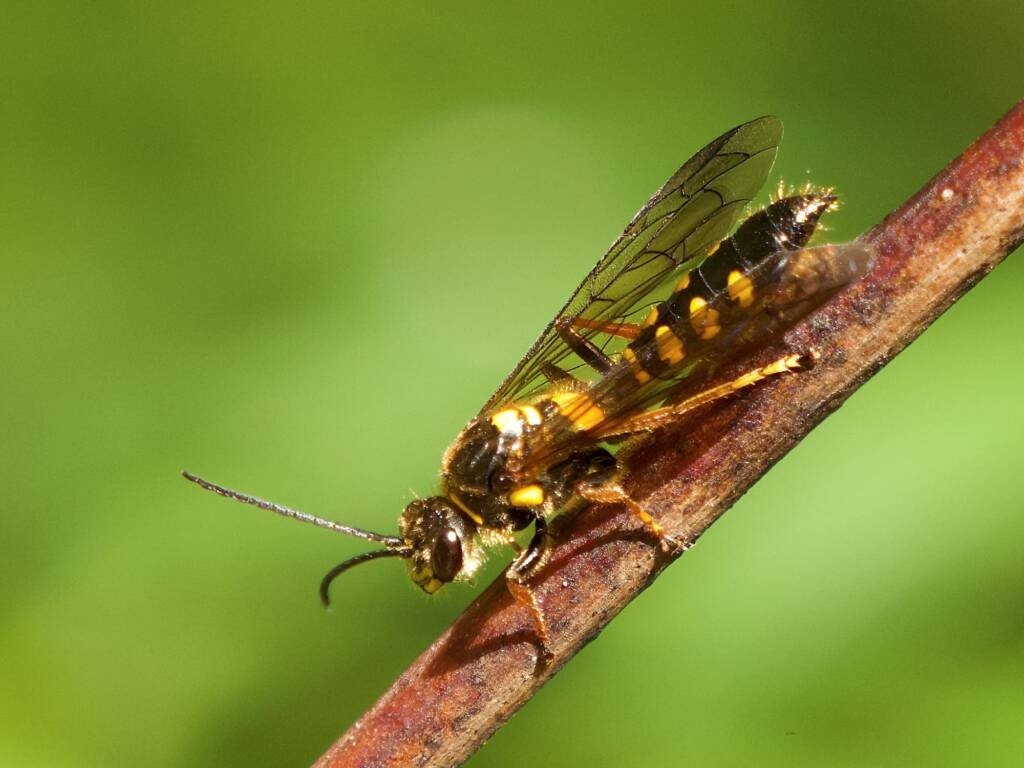
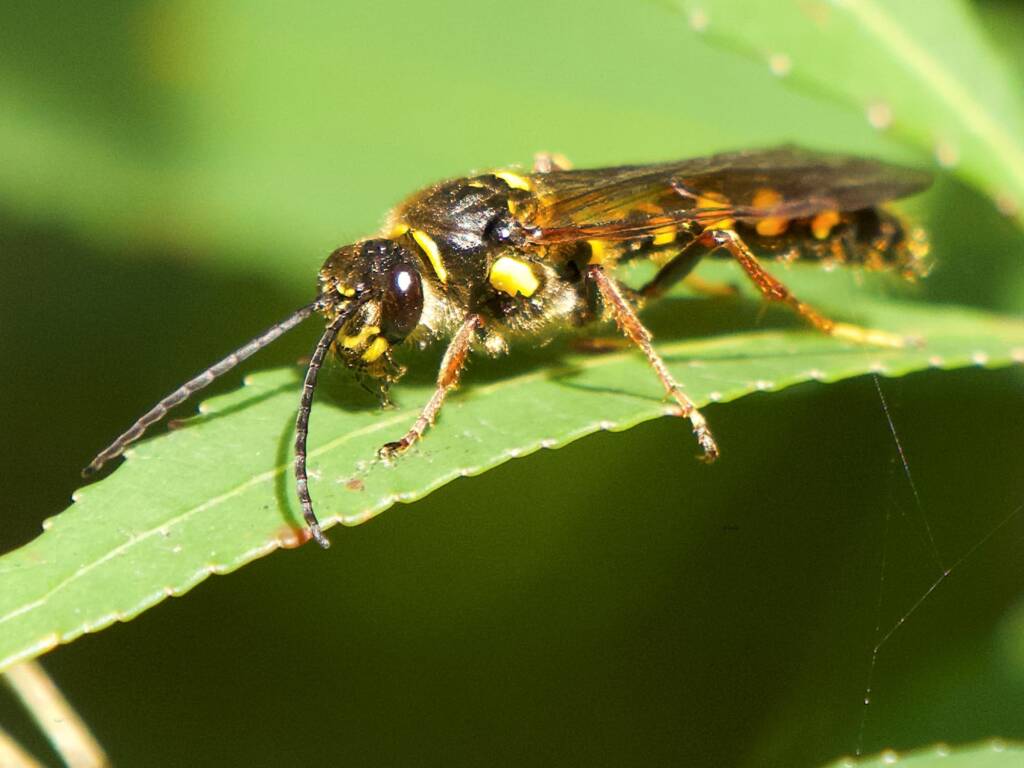
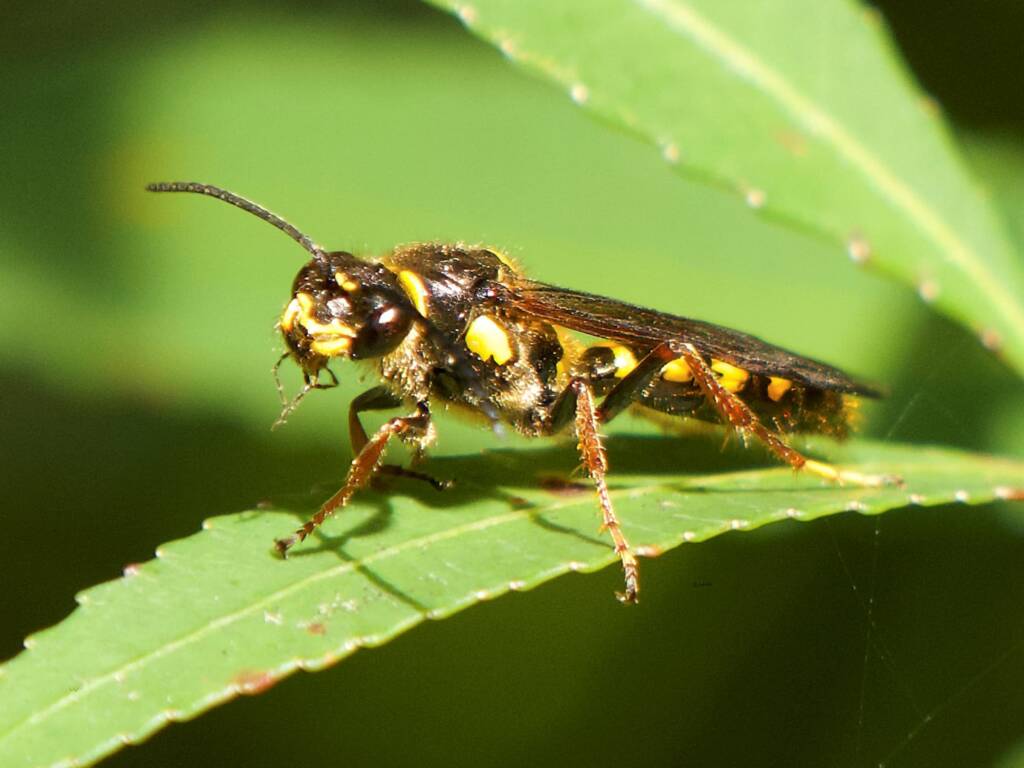
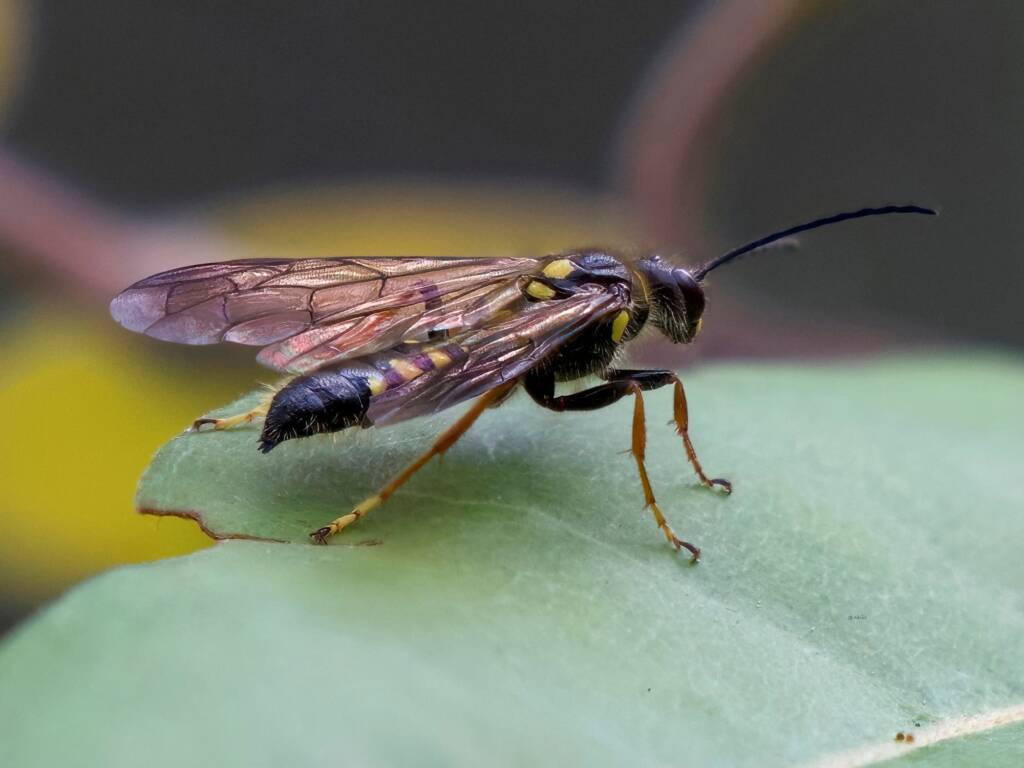
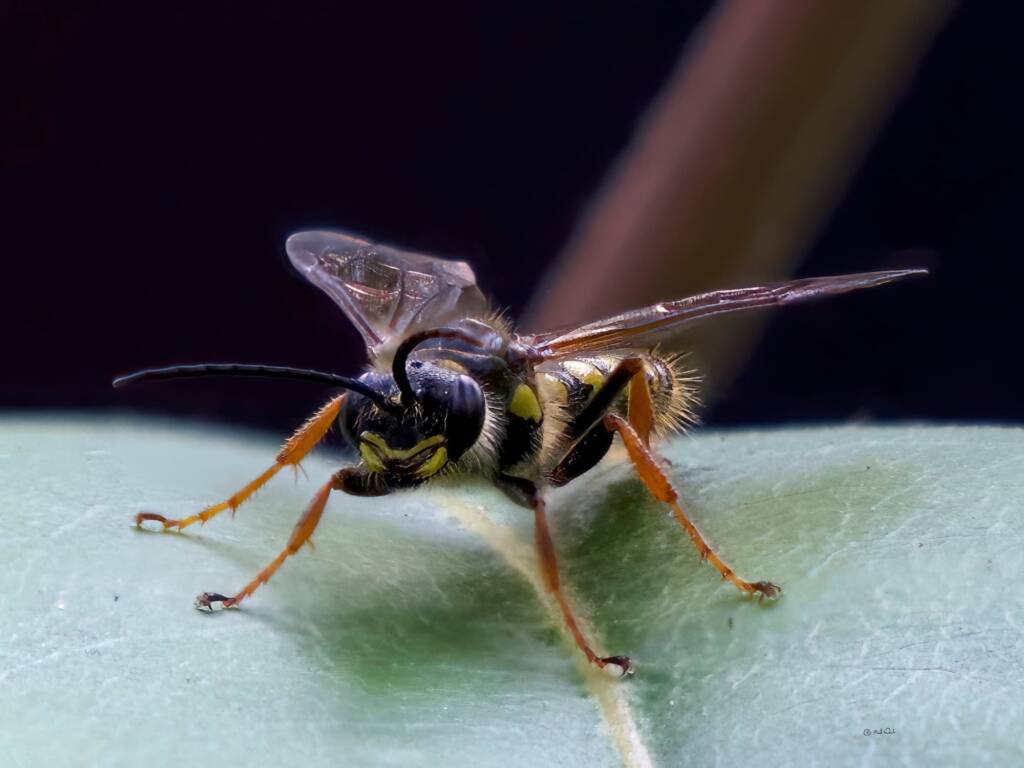
The male Thynnid wasps collect nectar and stash it under on metasomal hairs to present as a copulatory gift to females. This photograph shows the female in copulo with a male. It is not the greatest photo, but is the only photo that I am aware of that shows the putative female.
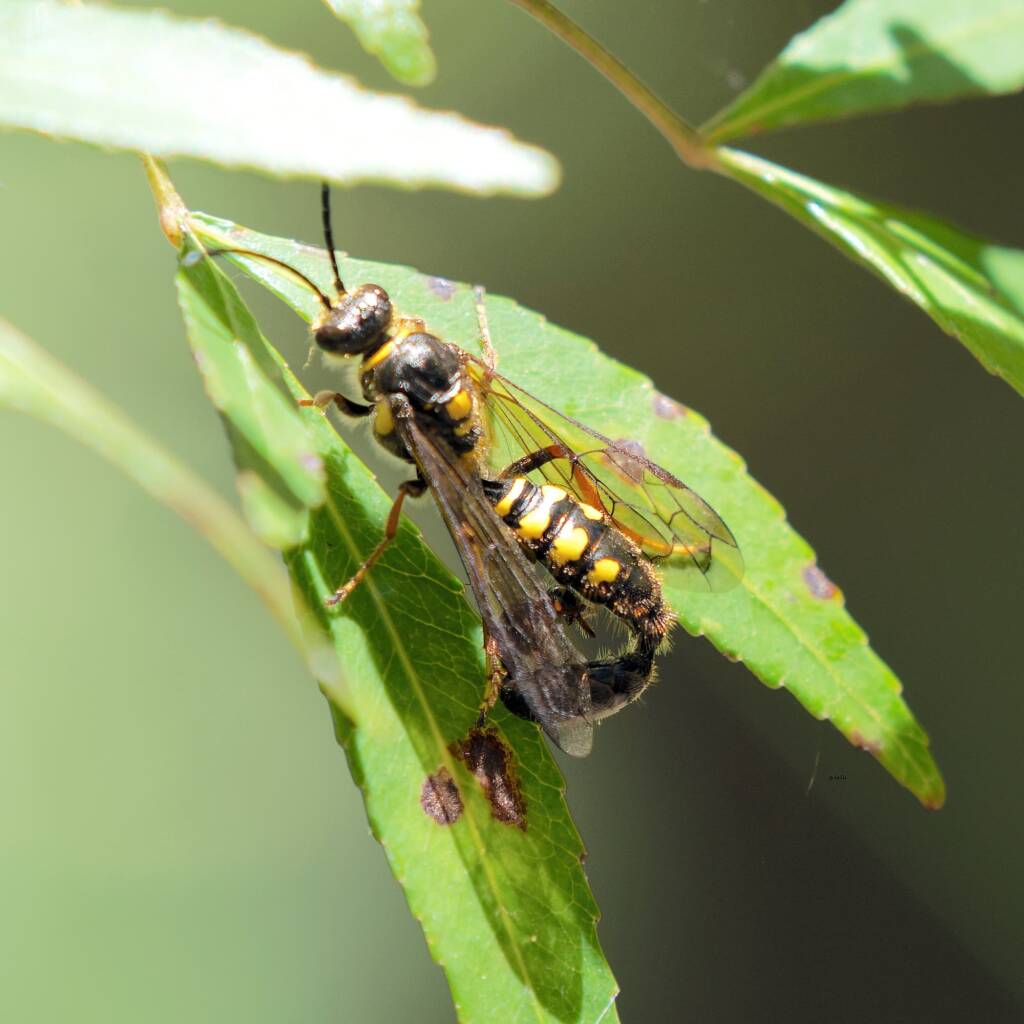
I have to caveat this claim that it is a female P. janeta, by noting that the females are known to sometimes couple with males of other species in order to secure a feed of nectar. (There doesn’t seem to be any evidence that hybrid species are produced by these liaisons so it seems there must be some mechanism to prevent fertile eggs emerging from intra-species coupling.)
Notwithstanding this caveat, I am fairly sure this is a female P. janeta because I frequented this bushland pretty often and I didn’t seen other species in evidence in that period.
- Scientific classification
- Kingdom: Animalia
- Phylum: Arthropoda
- Subphylum: Hexapoda
- Class: Insecta
- Informal: Pterygotes
- Order: Hymenoptera
- Superfamily: Vespoidea
- Family: Tiphiidae
- Subfamily: Thynninae
- Genus: Pentazeleboria
- Species: Pentazeleboria janeta
Footnote & References
- Pentazeleboria janeta, Ulladulla Wildflower Reserve NSW, Photographs © Phil Warburton
- Pentazeleboria janeta Brown, 1983, Atlas of Living Australia, https://bie.ala.org.au/species/https://biodiversity.org.au/afd/taxa/9c8364f2-e90c-4438-9e3e-73757ae3a2b0
TiphiidaePentazeleboria janeta Tiphiid Flower Wasp (family Tiphiidae)
WaspsWasps Index Australian Large Wasps Australian Mud Nest Wasps Mud Wasp Velvet Ants Abispa ephippium Acarozumia amaliae Aulacidae Australodynerus Bembix Bembicinae Blue Hairy Flower Wasp Braconidae Chrysididae Cryptocheilus bicolor (Orange Spider Wasp) Delta latreillei (Potter Wasp) Eumeninae Ferreola handschini (Orange-collared Spider Wasp) Flower Wasps Gasteruptiid Wasp Hairy Flower Wasps Isodontia (Grass-carrying Wasp) Lissopimpla excelsa (Orchid Dupe Wasp) Mutillidae Paralastor sp. Pseudabispa bicolor ssp. nigrocinctoides Radumeris radula (Yellow Hairy Flower Wasp) Radumeris tasmaniensis (Yellow Hairy Flower Wasp) Sceliphron laetum Thynnid Wasps Tiphiidae Yellow and Black Wasp
InsectsBees Beetles Blattodea Butterflies Coleoptera Cicada Crabronidae Diptera Dragonflies & Damselflies Formicidae Hemiptera Heteroptera (True Bugs) Mango Planthopper Moths Orthoptera Orthopteroid Processionary Caterpillar Stink Bugs, Shield Bugs and Allies Syrphidae Wasps Water Scorpion (Laccotrephes tristis) Witchetty Grub


